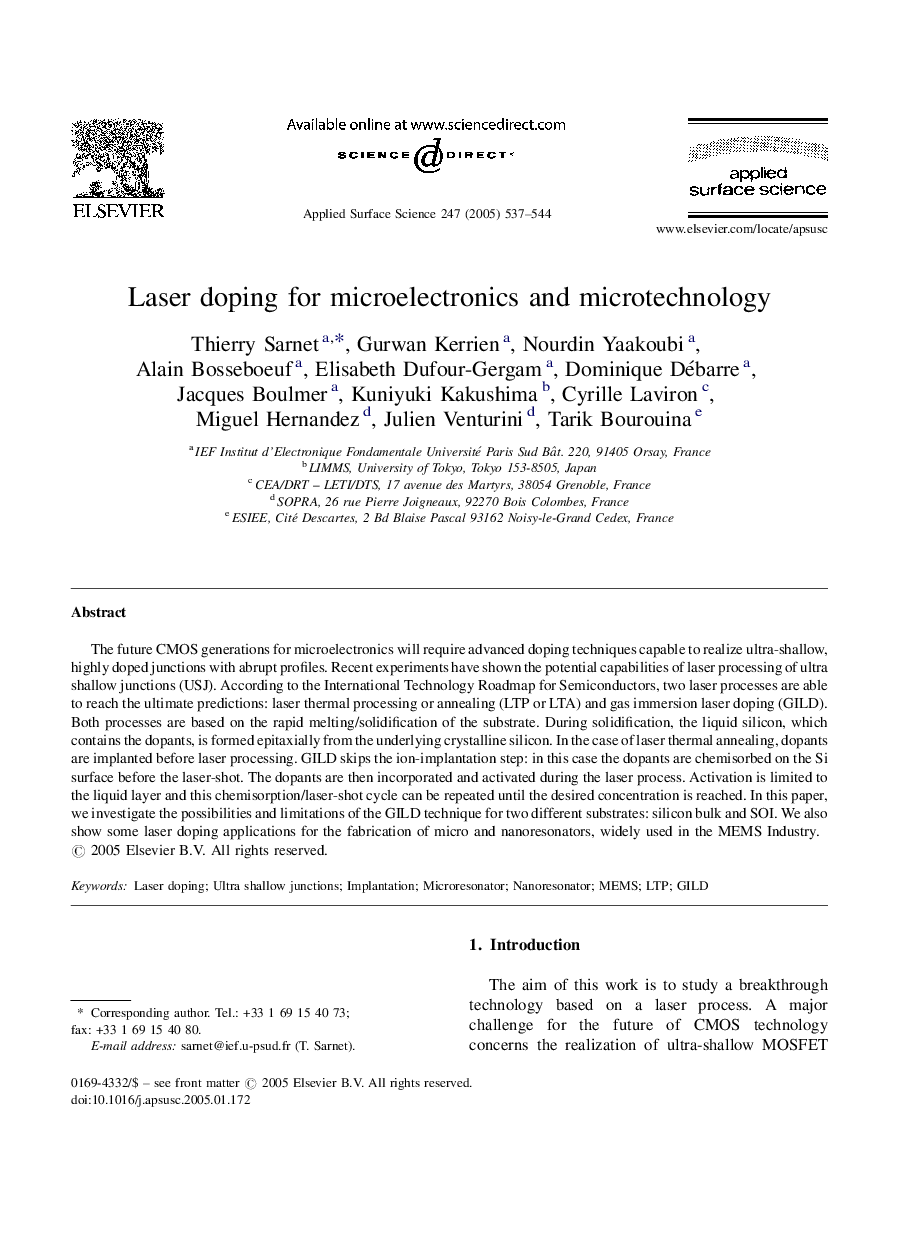| کد مقاله | کد نشریه | سال انتشار | مقاله انگلیسی | نسخه تمام متن |
|---|---|---|---|---|
| 9567161 | 1503710 | 2005 | 8 صفحه PDF | دانلود رایگان |
عنوان انگلیسی مقاله ISI
Laser doping for microelectronics and microtechnology
دانلود مقاله + سفارش ترجمه
دانلود مقاله ISI انگلیسی
رایگان برای ایرانیان
کلمات کلیدی
موضوعات مرتبط
مهندسی و علوم پایه
شیمی
شیمی تئوریک و عملی
پیش نمایش صفحه اول مقاله

چکیده انگلیسی
The future CMOS generations for microelectronics will require advanced doping techniques capable to realize ultra-shallow, highly doped junctions with abrupt profiles. Recent experiments have shown the potential capabilities of laser processing of ultra shallow junctions (USJ). According to the International Technology Roadmap for Semiconductors, two laser processes are able to reach the ultimate predictions: laser thermal processing or annealing (LTP or LTA) and gas immersion laser doping (GILD). Both processes are based on the rapid melting/solidification of the substrate. During solidification, the liquid silicon, which contains the dopants, is formed epitaxially from the underlying crystalline silicon. In the case of laser thermal annealing, dopants are implanted before laser processing. GILD skips the ion-implantation step: in this case the dopants are chemisorbed on the Si surface before the laser-shot. The dopants are then incorporated and activated during the laser process. Activation is limited to the liquid layer and this chemisorption/laser-shot cycle can be repeated until the desired concentration is reached. In this paper, we investigate the possibilities and limitations of the GILD technique for two different substrates: silicon bulk and SOI. We also show some laser doping applications for the fabrication of micro and nanoresonators, widely used in the MEMS Industry.
ناشر
Database: Elsevier - ScienceDirect (ساینس دایرکت)
Journal: Applied Surface Science - Volume 247, Issues 1â4, 15 July 2005, Pages 537-544
Journal: Applied Surface Science - Volume 247, Issues 1â4, 15 July 2005, Pages 537-544
نویسندگان
Thierry Sarnet, Gurwan Kerrien, Nourdin Yaakoubi, Alain Bosseboeuf, Elisabeth Dufour-Gergam, Dominique Débarre, Jacques Boulmer, Kuniyuki Kakushima, Cyrille Laviron, Miguel Hernandez, Julien Venturini, Tarik Bourouina,